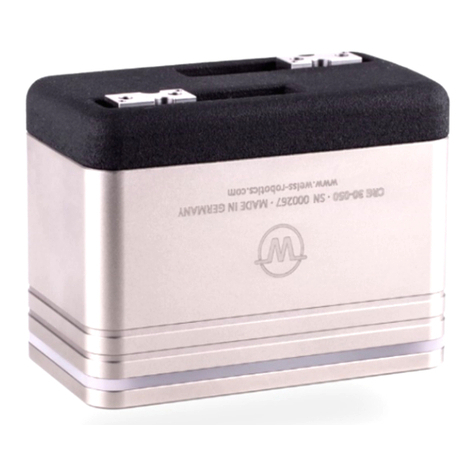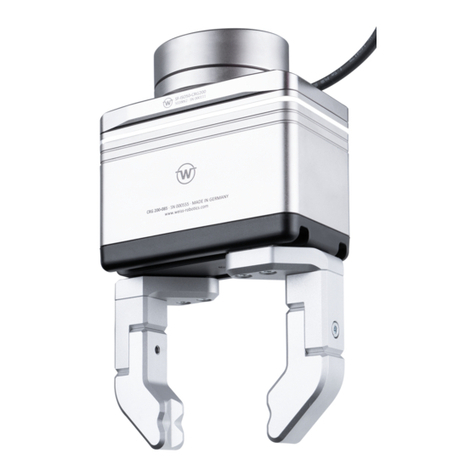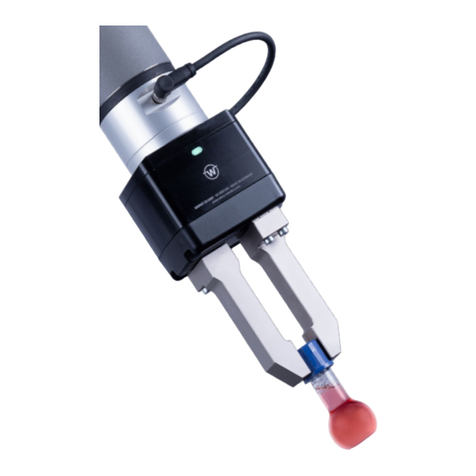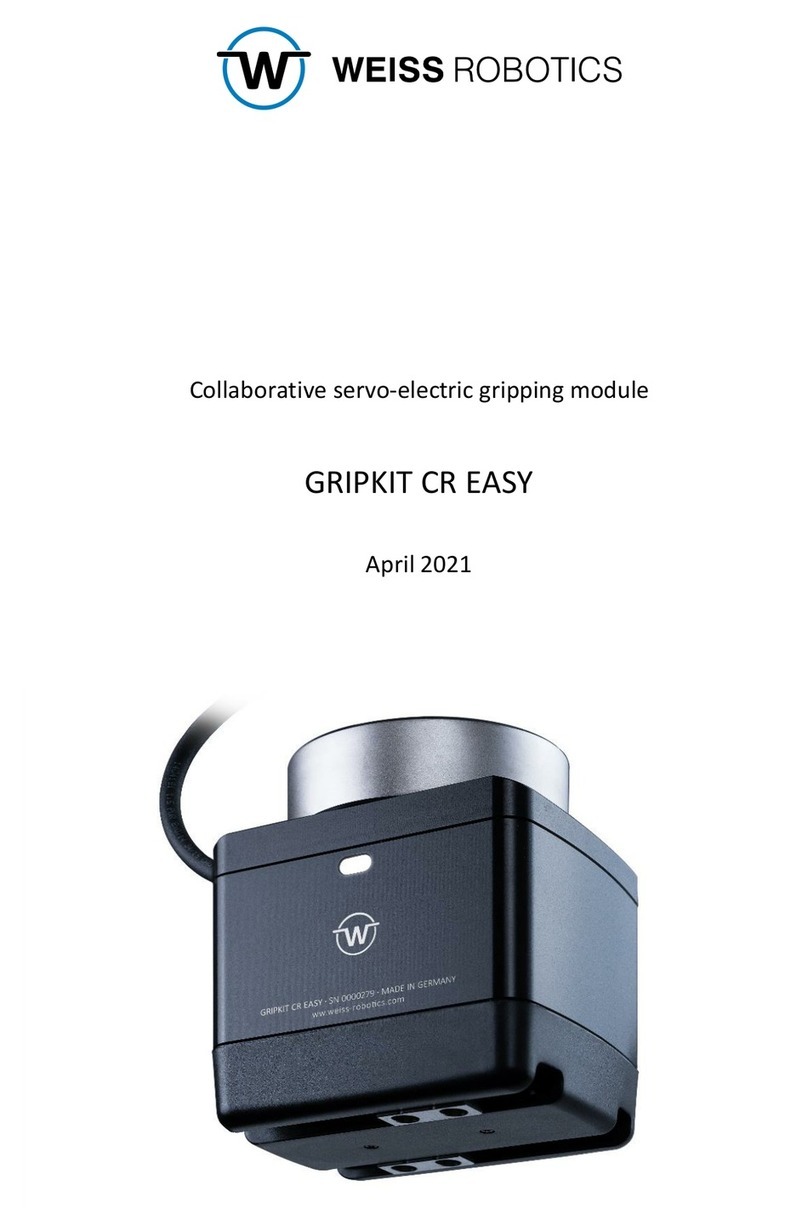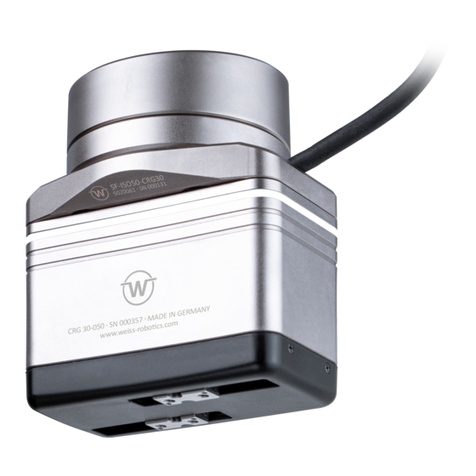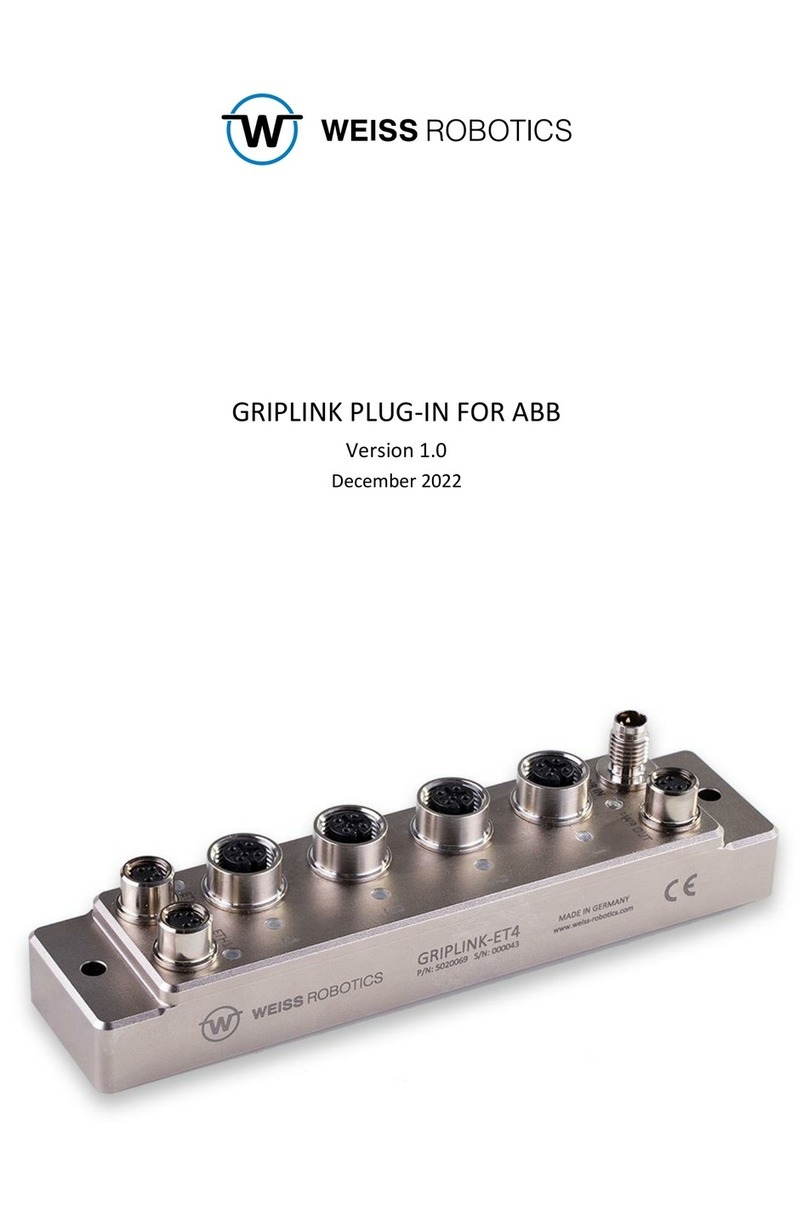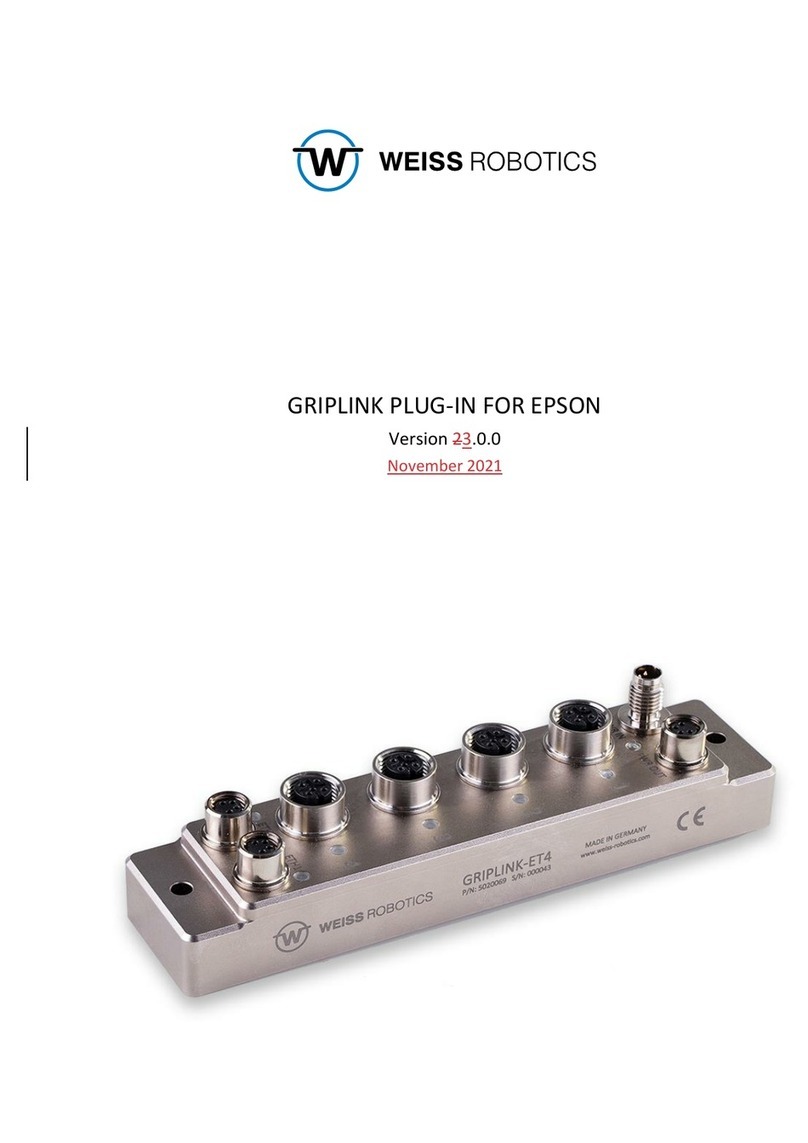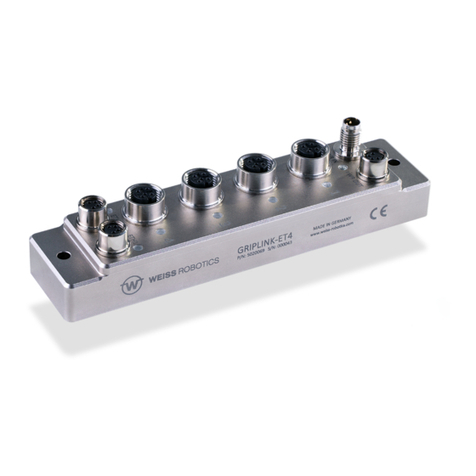- 2 -
8Interface Description IO-Link............................................................................ 20
8.1 Cyclic Process Data .....................................................................................................20
8.1.1 Output Data (IO-Link Master to Gripping Module)............................................................. 20
8.1.2 Input Data (Gripping Module to IO-Link Master)................................................................ 21
8.2 Acyclic Process Parameters and System Commands.....................................................23
8.2.1 Remanent Storage of Acyclic Process Parameters.............................................................. 23
8.2.2 Standardized Acyclic Process Parameters........................................................................... 24
8.2.3 Device-specific Acyclic Process Parameters ........................................................................ 24
8.2.3.1 Motion Parameters.......................................................................................... 25
8.2.3.2 Grip Parameters............................................................................................... 26
8.2.3.3 Virtual Position Switches.................................................................................. 28
8.2.3.4 Diagnosis Parameters ...................................................................................... 29
8.2.3.5 Protocol Memory............................................................................................. 30
8.2.3.6 Extended Configuration Parameters................................................................. 31
8.2.4 System Commands .............................................................................................................. 32
8.3 System Events (IO-Link Events) ...................................................................................32
9Control of the Gripping Module ....................................................................... 34
9.1 Gripping Commands ...................................................................................................34
9.2 Position Sensors .........................................................................................................35
9.3 Reference Run............................................................................................................35
9.4 Virtual Position Switches ............................................................................................35
9.5 Gripping State ............................................................................................................36
9.6 Parameterizable Grips ................................................................................................37
9.6.1 Gripping Direction ............................................................................................................... 38
9.7 Initializing the Module and Performing a Reference Run..............................................39
9.8 Grip Part ....................................................................................................................40
9.9 Release Part ...............................................................................................................40
9.10 Troubleshooting.........................................................................................................41
9.11 Activating and Deactivating the Module (Setup Mode)................................................42
9.12 Design of the Gripping Process....................................................................................43
9.12.1 Application Example External Gripping............................................................................... 44
9.12.2 Application Example Internal Gripping................................................................................ 45
9.13 Function Block for Siemens TIA Portal .........................................................................46
10 Maintenance and Cleaning............................................................................... 47
10.1 Needs-based Maintenance .........................................................................................48
